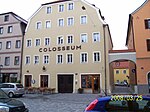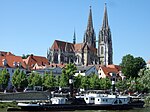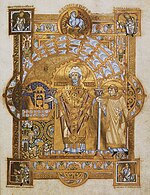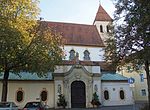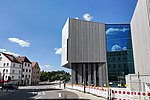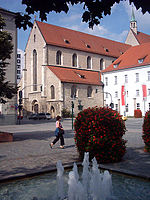Stone Bridge (Regensburg)
Bridges completed in the 12th centuryBridges over the DanubeBuildings and structures completed in 1346Former toll bridges in GermanyPedestrian bridges in Germany ... and 1 more
Stone bridges in Germany
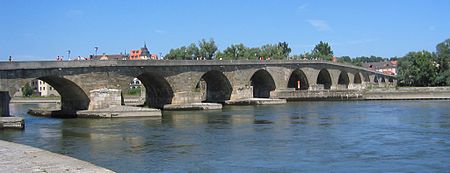
The Stone Bridge (Steinerne Brücke) in Regensburg, Germany, is a 12th-century bridge across the Danube linking the Old Town with Stadtamhof. For more than 800 years, until the 1930s, it was the city's only bridge across the river. It is a masterwork of medieval construction and an emblem of the city.
Excerpt from the Wikipedia article Stone Bridge (Regensburg) (License: CC BY-SA 3.0, Authors, Images).Stone Bridge (Regensburg)
Stone Bridge, Regensburg Stadtamhof
Geographical coordinates (GPS) Address External links Nearby Places Show on map
Geographical coordinates (GPS)
| Latitude | Longitude |
|---|---|
| N 49.022777777778 ° | E 12.097222222222 ° |
Address
Steinerne Brücke
Stone Bridge
93059 Regensburg, Stadtamhof
Bavaria, Germany
Open on Google Maps

